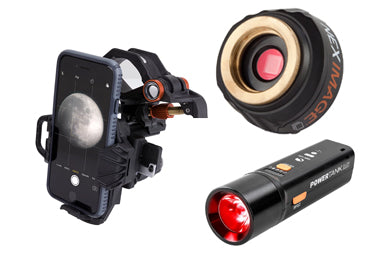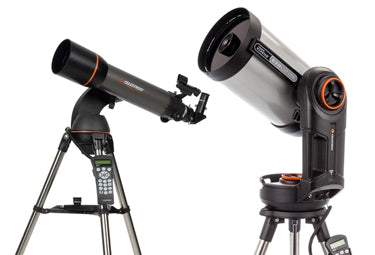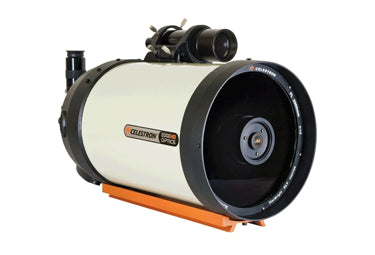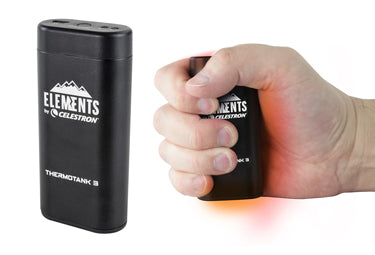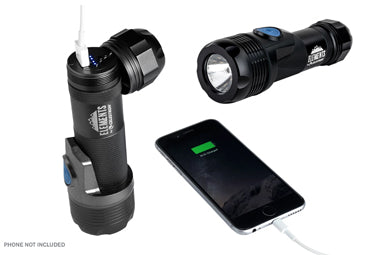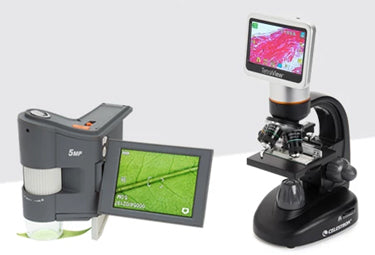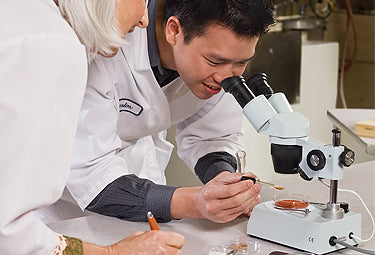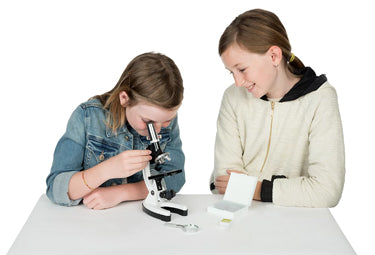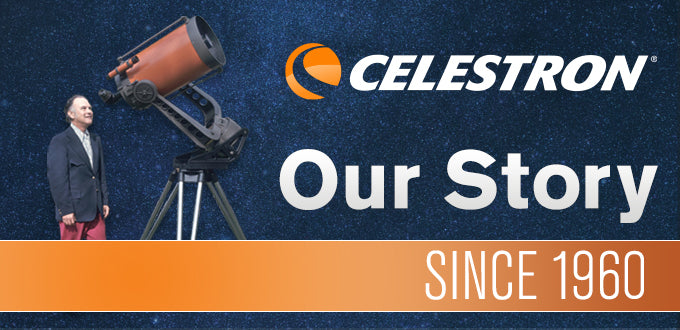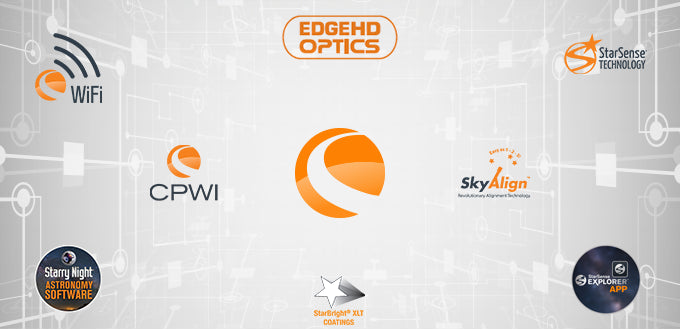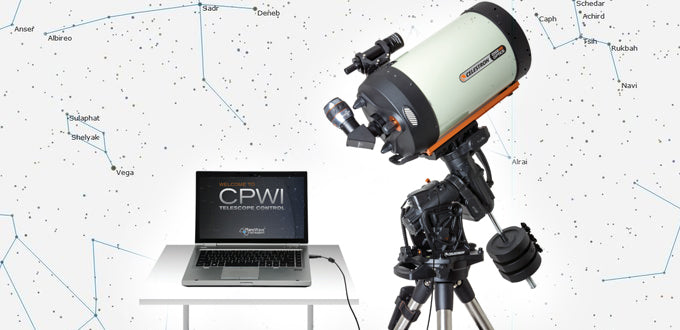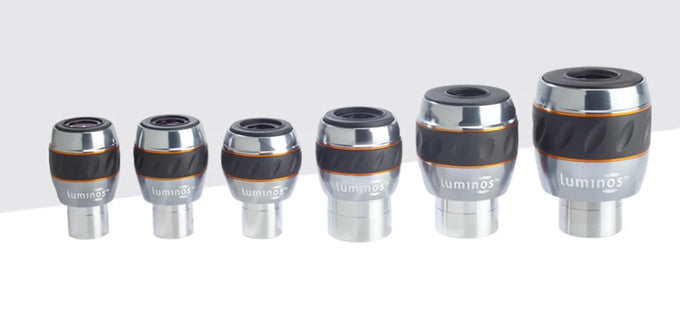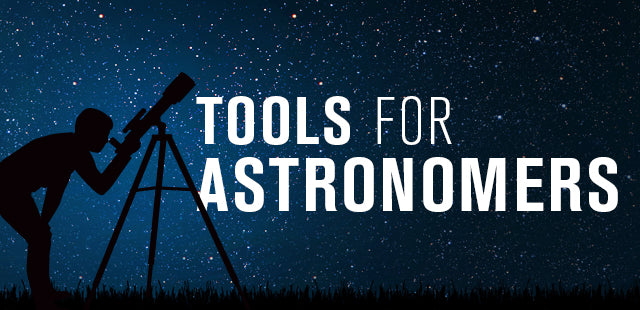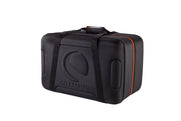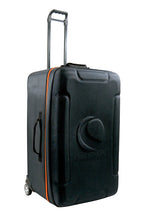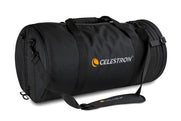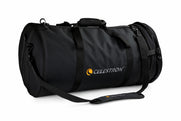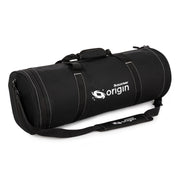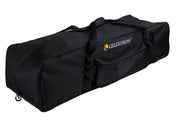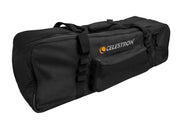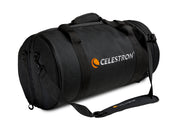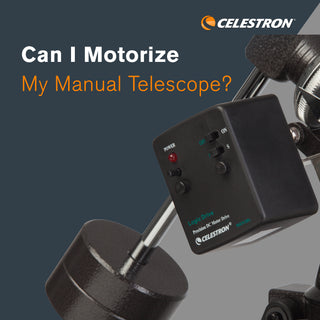Caring for Your Celestron Telescope: How to Maintain, Store, and Ship Your Telescope
July 25, 2023

Taking good care of your Celestron telescope will prolong its lifespan, giving you more time under the stars. It’s important to learn how to perform regular maintenance, store your scope safely, and carefully package it if you ever need to ship or travel with it. Here are some guidelines for cleaning, storing, and shipping your Celestron product.
- Telescope Maintenance
- Mount & Tripod Maintenance
- Telescope Storage
- Prepping your Telescope for Shipment
- Sending your Telescope to Celestron
Under regular use and reasonable care, Celestron telescopes will provide years of trouble-free service. Their components have no scheduled cleaning, lubrication, or mechanical adjustment periods. You should take the same precautions while storing, transporting, and operating optical and telescopic equipment in low or high temperatures as any other consumer electromechanical device, such as automotive accessories, cameras, consumer electronics, or power tools.
Cleaning your telescope’s optics is the most common maintenance procedure, but you should only clean them when necessary. Don’t clean your scope’s lens or mirror if it has a few visible specks of dust. Particles on objective lenses or mirrors do not affect image sharpness; they merely block a tiny amount of incoming light. A surprising amount of debris can accumulate on a primary optic without a noticeable reduction in its light throughput. Overly frequent or aggressive cleaning can create “micro-scratches” that damage and prematurely age the special coatings on mirrors and lenses, permanently degrading their performance.
Under normal circumstances, most telescope optics, such as the mirror inside an enclosed Newtonian telescope, will not need cleaning more than once a year. However, the unusual can happen, such as a sudden dust storm at a star party, necessitating a cleaning. If you store your telescope with covers and caps installed, dust and debris will rarely appear on the inner surfaces of telescope optics. The enclosed mirrors inside Schmidt-Cassegrain telescopes will likely never need cleaning. Exposed refractor objective lenses or Schmidt-Cassegrain corrector plates are more vulnerable to dust accumulation. When optics are truly dusty or dirty, they need cleaning.
The best approach is progressive: clean only as much as you need, starting with the gentlest cleaning and then using more force if required.
Note: These techniques are for normally dusty optics or those with minor fingerprint or eyelash smudges. We do not recommend removing a Schmidt-Cassegrain corrector plate or disassembling optics for internal cleaning. Removal or disassembly may void your warranty and result in collimation and image focus issues. If the inside of your enclosed telescope is dirty, call Celestron factory service. Optics with films, fungus, oil, or grease need unique methods for cleaning. We recommend contacting the Celestron repair department in cases that require more aggressive cleaning services.
Wipe away dust, dirt, fingerprints, and other particles on your lenses with Celestron’s LensPen Optics Cleaning Tool or Lens Cleaning Kit.
Before you try any other cleaning method, use compressed gas or air to blow away loose dust and large particles. This dramatically reduces your chances of scratching the lens or mirror in subsequent steps. If conditions are dew-free, use a large hand-squeezed bulb blower to blow off optics before capping the telescope after each use.
Canned gas dusters may contain bitterants and other compounds that can leave deposits unless you take proper precautions. Never shake a can of compressed gas before using it; doing so may introduce liquid into the gas delivery vent. First, spray a jet of gas away from any optics to clear condensed liquid or solids in the vent delivery tube. After verifying the vent tube is clear, hold the can upright to prevent accidental liquid discharge and move it slowly across the optics at an angle to sweep particles away.
Use a cleaning solution to lift off any remaining dirt or smudges gently. We recommend using alcohol as a solvent. Mix pure alcohol and distilled water, or buy off-the-shelf dilutions from your local drugstore. Pure alcohol is available from online industrial chemical sources but is hard to find at drugstore outlets. If the only option is rubbing alcohol, examine the contents listing carefully and only choose a brand that is only isopropyl alcohol diluted with water and has no additional chemistry that may leave a residue upon evaporation.
Dilutions of 50-70% alcohol work best. Higher percentages evaporate too fast and have a greater chance of dissolving optical cements, non-metallic parts, and lacquers on mechanical parts if the solution accidentally seeps into the wrong parts of the telescope optics or mechanism. Lower percentage dilutions won’t evaporate readily but may still cause problems if the solution accidentally gets into the wrong parts of the optics or telescope. Use the alcohol solution straight or with one or two drops of clear unscented liquid dish-type soap (non-waxy) per quart to help lift off dirt and finger oils. (Adding too much soap will leave visible residues on your optics.)
Apply the cleaning solution to a folded soft tissue or non-synthetic cotton balls for larger optical surfaces or cotton swabs for small parts like eyepiece lenses. White, lotion-free, unscented tissues sometimes leave residual lint. Instead, use a laboratory-grade lint-free tissue for optical cleaning. Fold the tissue into four layers to retain sufficient cleaning solution to wipe the optics. Don’t use too much cleaning solution, as you don’t want the excess fluid to run off your cleaning surface.
For eyepieces and filters, use a cotton swab and wipe with little to no downward pressure in straight strokes across the optical surfaces while rotating the swab to lift the dust off the lens. Repeat with the uncontaminated opposite side of the cotton swab to remove any remaining oils or dust.
For the objective lens on a refractor, use a wet cotton ball or folded tissue and gently drag it across the surface in straight strokes. Apply no more pressure than the weight of the cotton ball or tissue. Simply dragging it is the lowest force possible and has the least chance of scratching from any remaining dust. Repeat with new balls/tissues. If you must use force (on a localized deposit), use as little as possible, just enough to remove the sediment, no more, without damaging the optical surface.
Use the same process for Cassegrain telescope corrector plates. Point the telescope downward to prevent any excess cleaning solution from seeping inside the optical tube. Use radial strokes from the secondary mirror outwards. Repeat as needed with a fresh cotton ball or tissue for each swipe. Never use a contaminated cleaning item again, as embedded particles can create micro-scratches.
If a Newtonian mirror has significant dust and debris accumulation, you’ll need to remove the mirror from its tube and cell assembly to clean it. An excellent cleaning method is to submerge the mirror cell, face up, in clean, distilled water for about five minutes. Rock the mirror gently, and if the debris remains, drag a cotton ball across its face without exerting any pressure. Rinse with fresh water, then tip the mirror on its edge to allow the water to flow off. If water beads remain, gently wick them off the mirror with the edge of a folded paper towel so no evaporated water spots remain.
Take care with the sensitive coatings on Newtonian mirrors, particularly those in open truss-tube telescopes that are more exposed and need more frequent cleaning.
Caring for and maintaining your mount and tripod is essential to ensure optimal performance and longevity. Periodically inspect your mount and tripod for wear, damage, or misalignment. Check for any loose or worn-out components. Check the tripod’s stability regularly and ensure all tripod legs securely extend and lock. Tighten any loose bolts or screws as needed.
When using your telescope, there are small things you can do to keep your mount in top form. Follow the alignment procedures for accurate tracking and locating celestial objects. Regularly calibrate and align your mount to maintain its accuracy. Also, never overload your telescope; it can harm the internal gears and lead to instability or inaccurate tracking. You can find your telescope’s payload capacity here.
When you finish observing, gently wipe down the mount and tripod to remove dust, dirt, and debris with a soft, lint-free cloth. Avoid using harsh chemicals or solvents that could damage the materials. If needed, lubricate the mount’s moving parts, such as the gears and bearings, to ensure smooth and precise movements. (We recommend Super Lube brand lubricant.) Store your mount and tripod in a clean and dry area to prevent exposure to moisture, humidity, or extreme temperatures.
Storing your telescope properly when not in use is essential to maintain its performance and protect it from damage. Some factors to consider include storage location, protective covers, disassembly, periodic inspection, and battery storage.
Always keep your Celestron telescope indoors when not in use. For day-to-day observing, you can leave the scope fully assembled. Just be sure the covers are in place to prevent dust from entering the telescope tube. Celestron has no stated operating temperature range for either electronic or manually controlled telescopes, but, with reasonable care, you can use them during all four seasons, during the day (with a safe solar filter) and at night. However, you shouldn’t use your telescope in “extreme” conditions. Continuous extreme weather, especially extreme heat, can affect a telescope’s system. Likewise, extreme fluctuations in temperature can cause the components to expand and contract, allowing moisture to condense and evaporate, eventually deteriorating parts of your telescope.
When you finish your observing session, bring your telescope inside, point it downward, and let it acclimate to room temperature. If conditions were damp or cold, this will allow your telescope to warm up and allow accumulated moisture evaporate before storing. After some time, add the front lens cover, tube cap, and eyepiece dust covers to prevent dust accumulation, insect invasion, or unintentional damage. If the optical tube is attached to the mount with a quick-disconnect dovetail clamp, it’s usually safest to remove it and store it horizontally or vertically. Store the telescope at room temperature and keep it out of direct sunlight. If your telescope has battery-powered components, such as motorized mounts or computerized systems, remove the batteries before storage. This prevents battery leakage and potential damage to the electronics.
Points to consider when storing your Schmidt-Cassegrain telescope:
- Orienting the tube vertically upwards puts the least long-term stress on the focusing mechanism from the mirror’s weight.
- Racking the mirror all the way to the back of the tube (clockwise or near-focus) puts the least stress on the baffle-spindle that supports the mirror’s weight.
If a case or carrying bag is available for your telescope model, store the scope and tripod in a case or bag to protect against dust or physical damage. Celestron offers a wide range of storage and carrying bags for small to medium-sized telescope models. Consider using moisture-absorbing desiccant packs or silica gel inside the storage case or near the telescope to help control humidity and prevent moisture buildup. This is especially important if you live in a humid climate.
Permanently mounted observatory telescopes will experience heat extremes. To minimize the effects of weather, use fan ventilation and insulation in hot climates and modest heaters in extreme cold.
Periodically inspect your telescope, even when not in use, to check for any signs of damage, misalignment, or wear. Look for loose screws, damaged components, or any changes in the optics. Address any issues promptly to prevent further damage.
When shipping or packing a telescope, it’s crucial to take proper precautions to ensure its safety during transit. As recommended in all Celestron’s manuals, keep the original box, as it has all the foam padding, boxes for accessories, and packing material needed to transport your telescope securely. If you have discarded the original box, shipping and transportation experts recommend that you pack your item to be shock-resistant from a fall of 10 feet, not just to a flat surface, but onto a cinderblock smaller than the box.
Gather packing materials, you will need the following items:
- The telescope’s original packaging, a telescope case, or a sturdy box
- Bubble wrap and/or foam padding
- Packing peanuts and/or crumpled paper
- Tape
- “Handle with Care” stickers
- Shipping labels and appropriate documentation
Detach any accessories such as eyepieces, the finderscope, the star diagonal, and the visual back from the telescope. Wrap them individually in bubble wrap or foam padding and place them in a separate container. Anything left on the telescope could be damaged or cause damage to your box and telescope. Remove all batteries from finderscopes or mount bases. After removing the accessories, wrap the telescope with bubble wrap or foam padding. Ensure that the fragile components, like the objective lens or primary mirror, are well-cushioned and secure. Securely place the wrapped telescope inside the case or box. Place the container with the detached accessories inside the case or box alongside the telescope. Make sure they are securely positioned and won’t shift during transit. Fill empty spaces with packing peanuts or crumpled paper to prevent movement and provide additional cushioning. Double-boxing will significantly help in protecting the corrector plate from breakage. Close and seal the case or box using strong packing tape. Place “Handle with Care” stickers on multiple sides to alert the shipping carrier about the delicate contents. We highly recommend purchasing shipping insurance to protect your telescope in case of loss or damage during transit. Take photos of the packed telescope and accessories for insurance purposes and ease of mind. This will serve as evidence of its condition before transit, which can be helpful in case of any damage claims.
WARNING: Thumbscrew-style collimation knobs are popular accessories for assisting with Schmidt-Cassegrain collimation. These collimation thumbscrews typically fit under a Schmidt-Cassegrain telescope’s front cover during regular storage. However, when shipping a Schmidt-Cassegrain telescope, we strongly recommend that you remove thumbscrew collimation knobs and reinstall the original collimation screws. This warning is born from experience, as a harsh forward impact during shipping can flex the telescope front cover sufficiently to contact the protruding collimation knobs. In some cases, this transmitted impact shock directly to the corrector plate, resulting in a broken corrector plate. For this reason, Celestron will not accept return shipments of any SCT equipped with collimation thumbscrew knobs.
ALL ITEMS returned to Celestron for repair, replacement, or exchange without a Return Authorization Number (RA/RMA number) will not be accepted. The RA/RMA does not cover shipping fees. Handling fees and are not refundable.
An RA/RMA number is vital for your product’s administrative tracking, handling, and proper routing once it arrives at Celestron. To request an RA/RMA number, please call Celestron Technical Support at 1-800-421-9649 or click here to fill out our contact form.
- All returns must be received within 30 days of the RA/RMA issue date.
- Your RA/RMA# is only for evaluation/repair OR warranty exchange.
- Make sure the RA/RMA number appears clearly on the box shipping label, and include a copy of your original invoice and a brief statement of the problem.
- You can check your RMA status online by logging into your account or emailing your technical support liaison.
Follow the instruction provided by the Celestron representative for any RA/RMA issued by Celestron. In the case of any product(s) returned for replacement, exchange, or product(s) being returned as a No Fault Warranty Exchange, please send the product(s) with all original packaging, manuals, and accessories. However, in cases of individual components, for example, an optical tube only needing repair or warranty service, the Celestron representative may advise you that only the single component, not the entire telescope and mount, be sent to Celestron. Please inquire with your Celestron Representative for any special packaging instructions.
We reserve the right to refuse a return on any product that does not meet the above requirements.
You can find the product’s warranty on this page.

